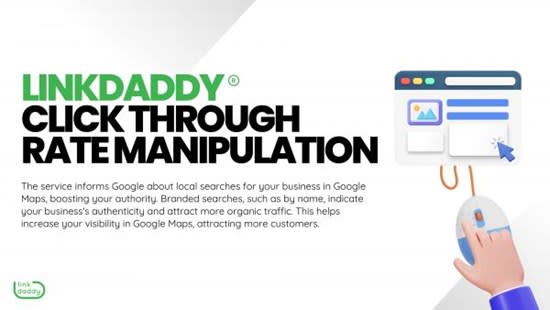Transform Your Ad Campaigns With Targeted CTR Manipulation
Efficient advertisement projects hinge on the intricacies of click-through price (CTR), an essential metric that reflects audience involvement. Targeted CTR adjustment, notified by data analytics, uses a method to refine just how ads connect with possible consumers.
Comprehending Click-Through Rate
What makes a click-through rate (CTR) a necessary metric in digital advertising and marketing? CTR is the percent of customers that click a certain web link out of the complete number of individuals that see a web page or an advertisement. It acts as a vital sign of the efficiency of internet marketing campaigns, showing just how well the web content reverberates with the target audience. A high CTR suggests that the ad is appealing and appropriate, while a low CTR suggests a demand for optimization.
Comprehending CTR allows marketers to assess the efficiency of different campaigns, ad styles, and targeting methods. It allows for benchmarking against sector criteria, giving understandings into areas that might call for renovation. Additionally, CTR plays an important function in search engine optimization (SEO) and pay-per-click (PAY PER CLICK) advertising, influencing quality ratings and general exposure in search results page.
Relevance of Targeted CTR

Moreover, targeted CTR adjustment enables marketing professionals to fine-tune their approaches based on target market actions and choices. By assessing information, organizations can identify which segments respond positively to specific content types and adjust their campaigns accordingly. This accuracy causes more impactful messaging and higher conversion prices.
In addition, targeted CTR cultivates brand name commitment. When consumers get appealing and appropriate content, they are most likely to involve with the brand name, developing trust and encouraging repeat interactions. Services can cultivate enduring relationships with customers while improving their overall market presence. In summary, the importance of targeted CTR hinges on its capability to not only improve campaign performance however also to develop significant connections with audiences, leading the way for continual growth and success.
Methods for CTR Adjustment
How can online marketers properly adjust click-through rates (CTR) to accomplish desired results? A number of strategies can be employed to boost CTR, thus making the most of the performance of ad campaign.

Second, making use of distinctive visuals can substantially impact CTR. Premium pictures or videos that straighten with the ad's message can attract focus and prompt individuals to click. Additionally, leveraging ad placement purposefully on platforms where the target market is most active can improve visibility and communication rates (LinkDaddy CTR Manipulation).
Third, customizing advertisements based on individual actions and preferences can generate better results. Making use this of retargeting strategies, online marketers can advise prospective consumers of products or solutions they previously checked out, hence enhancing the probability of clicks.
Lastly, maximizing for mobile is essential, as a significant part of internet traffic originates from smart phones. Making certain ads are mobile-friendly can result in enhanced CTR and general campaign performance.
Analyzing Audience Habits
Comprehending target market actions is essential for marketing professionals intending to improve click-through prices (CTR) and total project effectiveness. By diving right into the inspirations, choices, Read More Here and online routines of target audiences, marketing professionals can tailor their campaigns to resonate more deeply with potential clients.
Assessing audience habits entails numerous vital parts, including demographic evaluation, psychographic profiling, and customer trip mapping. Market analysis supplies insights into age, sex, earnings, and place, which can notify the design and messaging of advertisements. Psychographic profiling, on the various other hand, discovers way of livings, rate of interests, and values, making it possible for marketing professionals to create web content that lines up with audience aspirations.
Customer journey mapping is vital for understanding just how potential consumers engage with various touchpoints, from preliminary awareness to last conversion. By determining the stages where target markets involve or disengage, online marketers can maximize their approaches to improve CTR.

Determining Campaign Success
Gauging campaign success is a critical part of any type of advertising technique, as it provides the essential understandings to review performance and drive future decisions. To effectively assess success, online marketers should establish clear, measurable objectives lined up with overarching company goals. Secret performance signs (KPIs), such as click-through rates (CTR), conversion prices, and roi (ROI), function as crucial metrics in this procedure.
Tracking CTR specifically permits marketing professionals to evaluate the effectiveness of targeted advertising campaign. A high CTR suggests that the ad resonates with the target market, while a low CTR might require a reevaluation of targeting criteria, creative aspects, or messaging strategies. In addition, evaluating conversion prices offers deeper understandings into just how well a project drives desired activities, such as purchases or sign-ups.
Leveraging analytics devices can better enhance dimension initiatives, allowing real-time data surveillance and adjustments. Routinely examining project performance versus developed benchmarks makes sure continual improvement and optimization. Eventually, a robust measurement technique not just highlights successes yet also uncovers locations for improvement, leading the way for a lot more impactful and efficient advertising initiatives in the future.
Conclusion
In conclusion, changing ad campaigns through targeted click-through rate (CTR) adjustment demands an extensive understanding of audience behavior and effective messaging strategies. Inevitably, these approaches add to boosted brand loyalty and taken visit this site full advantage of return on investment, emphasizing the value of targeted CTR control in digital advertising and marketing.
Efficient advertisement projects pivot on the details of click-through rate (CTR), an essential statistics that reflects target market interaction. A high CTR suggests that the advertisement is appealing and appropriate, while a low CTR shows a requirement for optimization.
In recap, the value of targeted CTR lies in its ability to not just improve project effectiveness but additionally to produce purposeful links with target markets, paving the means for continual growth and success.
A high CTR suggests that the ad resonates with the target market, while a low CTR may demand a reevaluation of targeting parameters, imaginative elements, or messaging approaches.In conclusion, changing ad campaigns via targeted click-through rate (CTR) control demands a detailed understanding of audience habits and reliable messaging techniques.